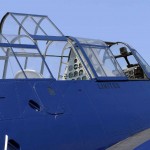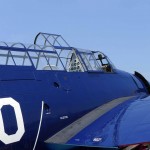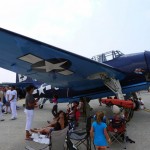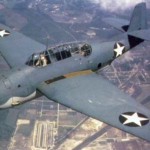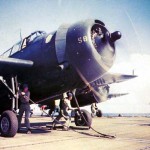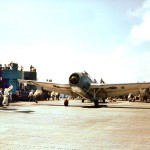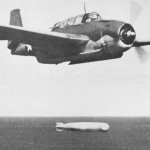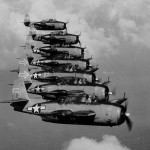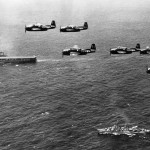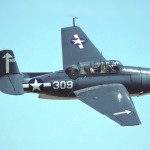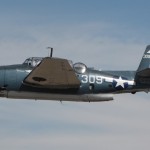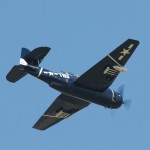
Airplanes tended not to fare much better, especially with the advent of the jet age. Propeller-driven fighters were getting obsolete within five years of war’s end.
But the Grumman TBF “Avenger” torpedo bomber had a startlingly long shelf life. It entered service in the Battle of Midway early in the war and served the U.S. until the 1960s with a series of upgrades.
On the afternoon of Dec. 7, 1941, Grumman hosted a ceremony to open its newest manufacturing plant and to show off the TBF. That day, the Japanese Imperial Navy attacked Pearl Harbor. It was tragic kismet. Within six months, Grumman would ship more than 100 TBFs to the navy, on its way to building thousands. Most of the first shipment arrived just hours after their carriers departed for the Battle of Midway, making most of them too late for the battle.
This anecdote actually debunks the popular myth that the “Avenger” was made and named to avenge the U.S. after Pearl Harbor. It was already named and under development well before the battle.
As was the case with a lot of weapons and vehicles during WWII, other companies jumped in to help with the war effort. General Motors also built the “Avenger,” which was called the TBM instead of TBF when it rolled off the GM assembly lines. Nearly 10,000 of these airplanes would be built.

The bomb bay housed one Mark 13 torpedo or one 2,000lb. bomb or four 500lb bombs. This was augmented by several Browning machine guns and rockets. The “Avenger” had three crewmen: a pilot, turret gunner and radioman/bombardier/ventral gunner.
The TBF’s first action was a disaster. Only six of the planes were on Midway before the battle, and five were shot down during battle. The sixth was badly damaged, with one gunner dead and the other two crewmen injured when it returned. But the planes and the older Douglas TBD “Devastators” used at Midway were successful at luring Japanese fighters so that American dive bombers could go to work on the enemy carriers.
This could have been improved by better American fighter cover at Midway. The “Devastators” were already outdated by the battle, and the “Avengers” were wildly outnumbered. They were turned into decoys for the dive bombers, but better American fighter presence at the battle could have allowed the torpedo bombers to turn lose and provide a more “complete” victory for American forces.
The case for “Avenger” was made. It became the primary U.S. navy bomber of WWII, serving in both the Atlantic and Pacific. At the Battle of the Eastern Solomons in August 1942, 24 TBFs from the carriers Saratoga and Enterprise successfully sank the Japanese light carrier Ryūjō at the cost of seven aircraft. In October, TBFs claimed a major prize, finishing off the battleship Hiei in the aftermath of Guadalcanal. “Avengers” also played a role in the sinking of the massive Japanese super battleships Musashi and Yamato.

The size of the TBF/TBM also allowed it to become one of the first planes to incorporate radar.
Future President George H.W. Bush became a hero in a TBM. In September 1944, while flying from the USS San Jacinto, he was shot down over the Pacific island of Chichi Jima. With both crewmates dead, Bush was able to successfully drop his payload on target before bailing out. He was later rescued by a U.S. submarine and received the Distinguished Flying Cross for his actions.
The “Avenger” was a vital and proven torpedo bomber in both theaters, but beyond traditional surface ship success, the “Avenger” also had about 30 submarine kills, making it one of the most successful anti-submarine planes of the war. This role contributed to its post-war career. The Royal Canadian Navy obtained 125 former US Navy TBM-3E Avengers from 1950 to 1952 and outfitted them with ASW technology. They served until the Grumman S-2 “Tracker” entered service in the mid 1950s and were used as trainers as late as 1960.
In 1945, the “Avenger” was involved in one of the most notorious urban legends in history when five TBMs and a PBM “Mariner” flying boat disappeared in the Bermuda Triangle. The planes and crews were never found, and the fateful Flight 19 remains a mystery.
The “Avenger” is a very popular warbird in the modern era. Many still exist in private collections. It is a fixture at airshows and museums around the U.S. Air Cache caught up with one at the 2012 Great New England Airshow.
Specifications
General
Crew: Three
Length: 40 ft 11.5 in
Wingspan: 54 ft 2 in
Height: 15 ft 5 in
Empty weight: 10,545 lb
Loaded weight: 17,893 lb
Engine: One Wright R-2600-20 radial engine, 1,900 hp
Performance
Maximum speed: 275 mph
Range: 1,000 mi
Ceiling: 30,100 ft
Rate of climb: 2,060 ft/min
Armament
Guns:
- One 0.30 in nose-mounted M1919 Browning machine gun (on early models)
- Two 0.50 in wing-mounted M2 Browning machine guns
- One 0.50 in dorsal-mounted M2 Browning machine gun
- One 0.30 in ventral-mounted M1919 Browning machine gun
Rockets: Up to eight 3.5-Inch Forward Firing Aircraft Rockets, 5-Inch Forward Firing Aircraft Rockets or High Velocity Aerial Rockets
Bombs: One 2,000 lb bomb or four 500 lb bombs or one 2,000 lb Mark 13 torpedo
Essential Reading and More
Online Resources:
- Wikipedia
- Wikipedia — Flight 19
- WWII Database
- Acepilots.com — Great information
- World’s Deadliest Aircraft (Video)
Photo Gallery
Feature Video
Enjoy this 43-minute episode of “SeaWings” dedicated to the TBF/TBM.
